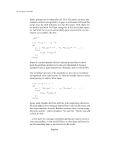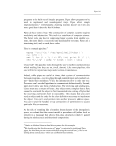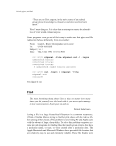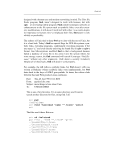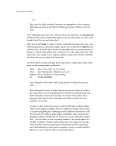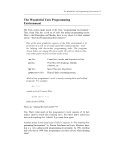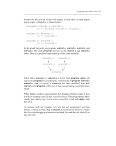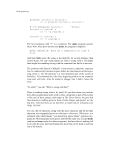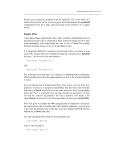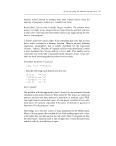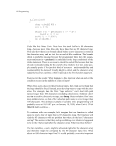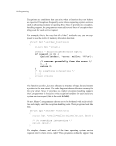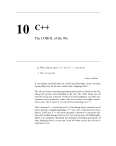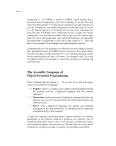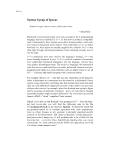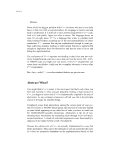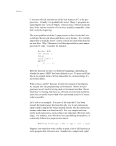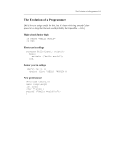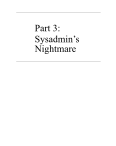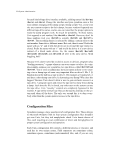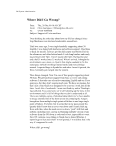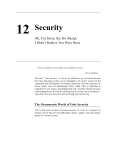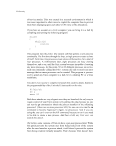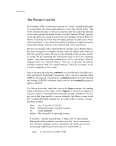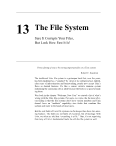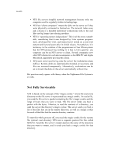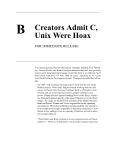64 Mail 2. Sendmail had to be reliable, never losing a mail message. 3. Existing software had to do the actual message delivery if at all possible. 4. Sendmail had to work in both simple and extremely complex environments. 5. Sendmail’s configuration could not be compiled into the program, but had to be read at startup. 6. Sendmail had to let various groups maintain their own mailing lists and let individuals specify their own mail forwarding, without having individuals or groups modify the system alias file. 7. Each user had to be able to specify that a program should be executed to process incoming mail (so that users could run “vacation” programs). 8. Network traffic had to be minimized by batching addresses to a single host when at all possible. (An unstated goal in Allman’s 1983 paper was that sendmail also had to implement the ARPANET’s nascent SMTP (Simple Mail Transport Proto- col) in order to satisfy the generals who were funding Unix development at Berkeley.) Sendmail was built while the Internet mail handling systems were in flux. As a result, it had to be programmable so that it could handle any possible changes in the standards. Delve into the mysteries of sendmail’s unread- able sendmail.cf files and you’ll discover ways of rewiring sendmail’s insides so that “@#$@$^%@#) at @$%#^!” is a valid e-mail address. That was great in 1985. In 1994, the Internet mail standards have been decided upon and such flexibility is no longer needed. Nevertheless, all of sendmail’s rope is still there, ready to make a hangman’s knot, should any- one have a sudden urge. Sendmail is one of those clever programs that performs a variety of differ- ent functions depending on what name you use to invoke it. Sometimes it’s the good ol’ sendmail other times it is the mail queue viewing program or the aliases database-builder. “Sendmail Revisited” admits that bundling so much functionality into a single program was probably a mistake: certainly the SMTP server, mail queue handler, and alias database management sys- tem should have been handled by different programs (no doubt carrying through on the Unix “tools” philosophy). Instead we have sendmail, which continues to grow beyond all expectations.
Sendmail: The Vietnam of Berkeley Unix 65 Date: Sun, 6 Feb 94 14:17:32 GMT From: Robert Seastrom rs@fiesta.intercon.com To: UNIX-HATERS Subject: intelligent? friendly? no, I don’t think so... Much to my chagrin, I’ve recently received requests from folks at my site to make our mailer non-RFC821-compliant by making it pass 8- bit mail. Apparently, the increasingly popular ISO/LATIN1 encod- ing format is 8-bit (why? last I checked, the Roman alphabet only had 26 characters) and messages encoded in it get hopelessly munged when the 8th bit gets stripped off. I’m not arguing that strip- ping the high bit is a good thing, just that it’s the standard, and that we have standards for a reason, and that the ISO people shouldn’t have had their heads so firmly implanted in their asses. But what do you expect from the people who brought us OSI? So I decided to upgrade to the latest version of Berzerkly Sendmail (8.6.5) which reputedly does a very good job of not adhering to the standard in question. It comes with an FAQ document. Isn’t it nice that we have FAQs, so that increasingly incompetent Weenix Unies can install and misconfigure increasingly complex software, and sometimes even diagnose problems that once upon a time would have required one to gasp read the source code! One of the books it recommends for people to read if they want to become Real Sendmail Wizards is: Costales, Allman, and Rickert, Sendmail. O’Reilly & Associates. Have you seen this book? It has more pages than War and Peace. More pages than my TOPS-10 system calls manual. It will stop a pel- let fired from a .177 air pistol at point-blank range before it pene- trates even halfway into the book (.22 testing next weekend). It’s probably necessary to go into this level of detail for some of the knuckle-draggers who are out there running machines on the Internet these days, which is even more scary. But I digress. Then, below, in the actual “Questions” section, I see: Q: Why does the Costales book have a bat on the cover? A: Do you want the real answer or the fun answer? The real answer is that Bryan Costales was presented with a choice of



































































































































































































